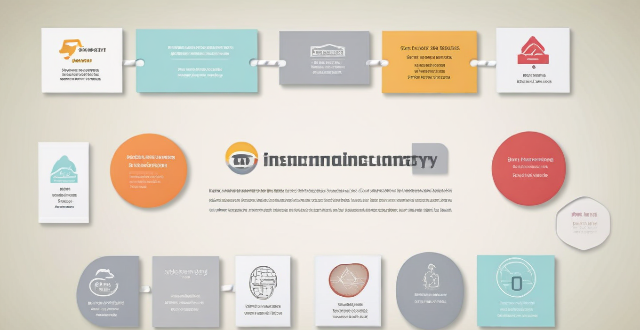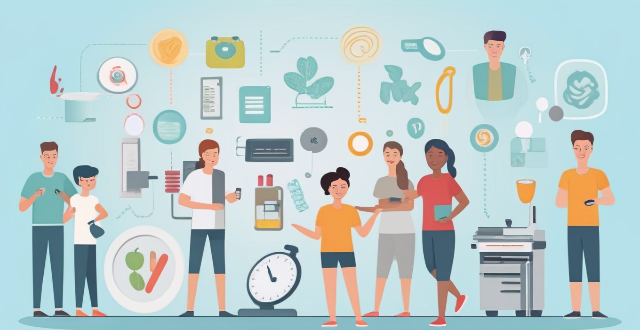Drill Employee

How can we ensure employee participation during safety drills ?
Strategies for ensuring employee participation during safety drills include clearly communicating the importance of these exercises, making them engaging and interactive, offering incentives for participation, and creating a supportive workplace culture. By implementing these strategies, employees are more likely to actively participate in safety drills, leading to improved preparedness for emergencies and a safer workplace overall.

What is a safety drill and why are they important ?
A safety drill is a crucial practice session that simulates emergency situations to prepare individuals and organizations for potential emergencies by practicing evacuation procedures, using safety equipment, and following established protocols. Safety drills are important for several reasons: they familiarize people with emergency procedures, identify weaknesses in current plans, ensure compliance with regulations, maintain readiness, and promote a culture of safety.

How often should safety drills be conducted in the workplace ?
Regular safety drills are essential for maintaining a safe workplace. The frequency of these drills depends on the type of emergency and local regulations, but they should be frequent enough to keep employees prepared and confident in their ability to handle emergencies. Best practices for safety drills include creating realistic scenarios, encouraging employee involvement, gathering feedback, and documenting each drill.

How can we measure the success of a safety drill ?
The article discusses the importance of evaluating safety drills to improve emergency response and preparedness. Key factors to consider include compliance with safety procedures, participant engagement, effectiveness of communications, availability and functionality of equipment and resources, and overall performance. By measuring the success of a safety drill, organizations can identify areas for improvement and ensure that their employees are well-prepared to handle emergency situations effectively.

What should be included in a safety drill report ?
In summary, a safety drill report is an essential document that provides a detailed account of the findings and outcomes of a safety drill conducted in an organization or facility. It includes key elements such as header information, purpose of the drill, participation details, drill procedures, performance assessment, findings & recommendations, and conclusion. The report also includes attachments and supporting documents such as photos/videos, attendance records, and emergency contact information. By incorporating these elements into a comprehensive safety drill report, organizations can effectively evaluate their readiness to handle emergencies and continuously improve their safety protocols.

What are the key steps in performing an earthquake drill at home ?
Earthquake drills are crucial for preparing your family to react quickly and safely during an actual earthquake. Here are the key steps to perform an effective earthquake drill at home: 1. **Preparation**: Inform family members about the purpose of the drill, assign roles, identify safe places, and secure objects. 2. **Drop, Cover, and Hold On**: Drop to your hands and knees, crawl to a safe place, and hold on until the shaking stops. 3. **Relocation Drill**: Practice evacuating safely, agree on a meeting spot, and check in with all family members. 4. **After the Drill**: Review performance, update the emergency plan, and stay informed about local warning systems. 5. **Repeat**: Conduct regular earthquake drills at least once every six months to keep procedures fresh in everyone's minds.

How does corporate social responsibility impact employee satisfaction and retention ?
Corporate Social Responsibility (CSR) is a business model that focuses on balancing profitability with social responsibility. It involves companies taking actions to improve societal well-being, environmental sustainability, and ethical practices. This approach not only benefits the community and the environment but also has a significant impact on employee satisfaction and retention. The relationship between CSR and employee satisfaction includes enhanced company image and reputation, alignment with personal values, and improved work environment. The relationship between CSR and employee retention includes lower turnover rates, increased loyalty, and higher engagement levels. In conclusion, corporate social responsibility plays a crucial role in enhancing employee satisfaction and retention. By prioritizing CSR initiatives, companies can create a positive work environment, attract and retain talent, and foster loyalty among their employees. As a result, businesses that embrace CSR are more likely to have a stable workforce and achieve long-term success.

What is the role of employee participation in maintaining workplace safety ?
**Role of Employee Participation in Maintaining Workplace Safety** Employee participation is crucial for maintaining workplace safety. It helps identify hazards, promote awareness, enhance communication, build trust, and improve compliance with safety regulations. By involving employees in safety initiatives, organizations can create a safe work environment and ensure the well-being of their workforce.

How do exercise programs impact employee productivity and job satisfaction ?
Exercise programs have a significant impact on employee productivity and job satisfaction. Companies can improve employee health, reduce stress levels, enhance team building, increase energy levels, improve mental clarity and cognitive function, reduce absenteeism and tardiness, enhance work-life balance, increase motivation and engagement, and improve company culture and retention rates by promoting a healthy lifestyle and providing opportunities for physical activity. Implementing exercise programs should be considered a valuable investment for any organization looking to improve its overall performance and success.

How do office layouts influence employee physical health and activity levels ?
This article explores the influence of office layouts on employee physical health and activity levels, discussing the benefits and drawbacks of open versus closed office designs, the importance of ergonomics in workstation design, and strategies for encouraging movement within the workplace. By considering these factors, employers can create environments that promote productivity while prioritizing employee well-being.

How do safety drills help identify potential hazards in the workplace ?
Safety drills are crucial exercises to simulate and identify potential hazards in the workplace. They help highlight weak links in safety procedures, test equipment and infrastructure, enhance visibility of hazardous areas, train for unexpected circumstances, and promote a culture of safety. By conducting regular drills, organizations can reduce accidents and ensure a safer environment for employees.

Are there any specific exercises or drills for skill improvement in basketball/football/tennis, etc. ?
Topic: Skill Improvement Exercises and Drills in Basketball, Football, and Tennis Basketball: - Dribble the ball with alternating hands and in a figure 8 motion to improve ball handling skills. - Practice shooting free throws and spot shooting to enhance accuracy and consistency. - Work on lateral movement and closeout drills to improve defensive positioning and quickness. Football (Soccer): - Pass the ball against a wall and in a triangle formation to improve passing accuracy and touch. - Practice shooting at targets and receiving passes before shooting to enhance shooting accuracy and speed. - Work on marking and tackling drills to improve defensive skills and technique. Tennis: - Hit crosscourt groundstrokes and alternate forehand and backhand shots to improve accuracy and consistency. - Practice serving to targets and focusing on second serves to enhance serving reliability and placement. - Work on lateral movement and net approach drills to improve court coverage and net play.

How can I ensure that my employees understand the meaning of various safety signs ?
To ensure that employees understand safety signs, conduct regularTo ensure that employees understand safety signs, conduct regular aids like posters and Conduct mock drills and encourage open communication through Q&A sessions and suggestion boxes. Provide access to online resources and printed materials for continuous learning.

Are there any specific exercises or stretches that can help improve my golf game ?
Golf improvement through specific exercises and stretches, including core strengthening exercises like plank and Russian twists, flexibility and mobility stretches such as hamstring and hip flexor stretches, and putting practice drills like the line and gate drills to enhance precision and control.

How do energy-efficient buildings affect a company's bottom line ?
Energy-efficient buildings positively impact a company's profitability by reducing energy costs, enhancing employee productivity, and improving environmental performance. These benefits include lower utility bills from reduced energy consumption, increased revenue from healthier and more productive employees, and improved corporate image that attracts talent and eco-conscious customers. Despite higher initial investment, the long-term advantages make such expenditures beneficial for sustainable business growth.

What are the legal requirements for workplace safety ?
Legal requirements for workplace safety include compliance with occupational health and safety laws, implementation of a health and safety management system, provision of personal protective equipment (PPE), reporting of injuries and illnesses, and employee participation in health and safety decisions. These measures ensure the well-being of employees and protect the company from potential legal liabilities.

Is it cost-effective for companies to invest in on-site fitness facilities for their workers ?
The text discusses whether it is cost-effective for companies to invest in on-site fitness facilities for their workers. The pros of investing include improved employee health and well-being, attracting and retaining top talent, and increased employee satisfaction and loyalty. However, the cons include high upfront costs, limited use and participation, and maintenance and management challenges. Ultimately, whether it is cost-effective depends on the specific needs and resources of each company.

How do safety regulations affect the hospitality industry ?
The hospitality industry is heavily impacted by safety regulations, which are crucial for maintaining the well-being of both employees and guests. These regulations cover various areas including food safety, fire safety, health and hygiene standards, and employee training. Proper handling, storage, and preparation of food items are essential to prevent foodborne illnesses, while functioning smoke detectors, fire extinguishers, and emergency exits ensure fire safety. Regular cleaning and disinfection of guest rooms, public areas, and workstations maintain high health and hygiene standards, and PPE may be required for certain tasks. Comprehensive employee training on various safety topics is vital for compliance with safety regulations. Overall, adhering to these regulations helps establishments maintain a safe environment and provide excellent service to customers.

Are there any proven benefits of offering gym memberships or fitness classes as part of workplace wellness programs ?
The text provides a topic summary of the benefits of offering gym memberships or fitness classes as part of workplace wellness programs. It highlights the advantages in terms of improved employee health and well-being, enhanced workplace atmosphere and culture, and financial benefits for employers. The summary also emphasizes that these programs can lead to reduced stress levels, increased energy levels, improved cardiovascular health, increased employee morale, improved teamwork and collaboration, lower absenteeism rates, reduced healthcare costs, increased productivity, and lower turnover rates. Overall, the text suggests that offering gym memberships or fitness classes as part of workplace wellness programs can have numerous benefits for both employees and employers.

How does exercise benefit employees in the workplace ?
Exercise benefits employees in the workplace by improving health and well-being, increasing productivity, promoting teamwork, and providing long-term business advantages such as lower healthcare costs and higher employee retention.

What are the consequences of ignoring workplace safety regulations ?
Ignoring workplace safety regulations can lead to legal, financial, and human consequences for both individuals and organizations. Legal consequences include fines and penalties, legal liability, and loss of certifications. Financial consequences involve increased insurance costs, productivity losses, and reputation damage. Human consequences encompass injuries and deaths, mental health impact, and low employee morale. Prioritizing safety is crucial for protecting employees, maintaining a good reputation, and ensuring long-term success.

What is the importance of personal protective equipment (PPE) in the workplace ?
The Importance of Personal Protective Equipment (PPE) in the Workplace Personal protective equipment (PPE) is essential in the workplace to ensure the safety and health of employees. PPE includes items such as gloves, goggles, masks, hearing protection, and more. Here are some reasons why PPE is important: - Protection from Hazards: PPE protects workers from various hazards that may be present in their work environment, such as chemicals, biological agents, radiological materials, physical hazards, and mechanical hazards. - Compliance with Regulations: Employers are required by law to provide a safe and healthy working environment for their employees, which includes providing appropriate PPE when necessary. - Reduced Workplace Accidents: PPE can help prevent accidents in the workplace by protecting workers from harm, such as cuts, burns, and eye injuries. - Improved Employee Morale: Providing PPE shows employees that their employer values their safety and wants them to return home safely at the end of each workday, which can lead to improved morale and job satisfaction.

How can organizations create a culture of risk awareness among employees ?
Organizations can create a culture of risk awareness among employees by implementing strategies such as leadership buy-in, training and education, open communication channels, integrating risk management into daily operations, recognizing and rewarding risk awareness, and continuous improvement. These efforts will help employees proactively identify, assess, and manage risks more effectively.

Can you provide examples of different types of safety drills ?
Safety drills are essential exercises designed to prepare individuals and organizations for emergencies. They help ensure that everyone knows what to do in case of an unexpected event, reducing the risk of injury or loss of life. Here are some examples of different types of safety drills: 1. Fire Drills: Alerting occupants of the building by sounding alarms, guiding them to exit routes and assembly points, ensuring that all areas are cleared, conducting a headcount to account for all individuals. 2. Earthquake Drills: "Drop, Cover, and Hold On" procedure to protect oneself from falling objects, evacuating the building only if it is safe to do so, knowing how to turn off utilities like gas and water to prevent further damage. 3. Active Shooter Drills: Knowing the "Run, Hide, Fight" strategy, how to report an active shooter situation to authorities, safe evacuation techniques without drawing attention to oneself. 4. Chemical Spill or Hazmat Incident Drills: Proper use of personal protective equipment (PPE), safe evacuation procedures, reporting the incident to emergency services, decontamination procedures for those who may have been exposed. 5. Medical Emergency Drills: Basic Life Support (BLS) and CPR techniques, use of automated external defibrillators (AEDs), first aid kit usage and management of injuries until professional help arrives.

In what ways can workplaces promote healthy lifestyle habits among their employees ?
This article explores various ways in which workplaces can encourage healthy lifestyle habits among their employees, including physical activity, healthy eating, mental well-being, and breaks/time off. By implementing strategies such as on-site fitness facilities, flexible working hours, healthy snack options, counseling services, and celebrating milestones, companies can improve productivity, reduce absenteeism, and enhance employee satisfaction. The article concludes that employers who invest in their employees' health and wellness are likely to see long-term benefits for both the individual and the organization as a whole.

How does climate change affect small businesses and their employees ?
Climate change impacts small businesses and employees through increased costs, disrupted supply chains, health issues, changes in customer behavior, adaptation challenges, and opportunities for innovation. Rising energy prices and insurance premiums add financial strain, while unpredictable weather patterns and extreme temperatures affect productivity and supply chains. Employee health is also impacted by heat stress and air quality issues. However, there are opportunities for small businesses to tap into niche markets and adopt eco-friendly solutions.

Are there any industry-specific considerations for implementing workplace wellness programs ?
Workplace wellness programs should consider industry-specific needs and challenges. For the manufacturing industry, safety training and ergonomic assessments are essential, while physical fitness initiatives like on-site gym facilities and fitness challenges can encourage employees to stay active. In the healthcare industry, mental health support through stress management programs and access to counseling services is crucial, along with infectious disease prevention measures such as vaccination programs and hand hygiene campaigns. The technology industry can benefit from digital detox retreats and sitting disease prevention strategies like standing desks and movement breaks. Tailoring workplace wellness programs to address industry-specific concerns can create more effective initiatives that improve employee health and productivity.

Why is corporate social responsibility important for businesses ?
In full: Why Corporate Social Responsibility is Important for Businesses Corporate social responsibility (CSR) is crucial for businesses as it helps manage reputation, mitigate risks, foster innovation and competitive advantage, and attract and retain top talent. Companies that engage in socially responsible practices are seen as trustworthy, ethical, and caring by consumers, investors, and employees. This positive image can lead to increased customer loyalty, higher employee retention rates, and better access to capital. By adopting sustainable practices, companies can reduce their exposure to regulatory fines, lawsuits, and reputational damage resulting from environmental or social misconduct. CSR also encourages innovation and competitive advantage by promoting creativity and collaboration within organizations. Today's job seekers are increasingly looking for employers who share their values and demonstrate a commitment to making a positive impact on society and the environment. By embracing CSR, companies can attract and retain employees who are passionate about making a difference in the world. As consumers become more aware of the impact of business on society and the environment, companies that prioritize CSR will be well-positioned to succeed in the long run.

How do I train my employees for emergency situations ?
Training employees for emergency situations is crucial to ensure their safety and minimize the impact of emergencies on your business. Here's a summary of the key steps involved: 1. Identify potential emergencies that could occur in your workplace, such as fire, medical emergencies, natural disasters, workplace violence, and chemical spills or hazardous materials incidents. 2. Develop an emergency plan that outlines the steps employees should take during each type of emergency. This plan should include evacuation procedures, first aid protocols, contact information for emergency services, safe locations, and procedures for accounting for all employees after an emergency. 3. Conduct regular emergency drills to ensure that employees are familiar with the emergency plan and know what to do in case of an emergency. Drills should be conducted at least annually and cover all types of emergencies identified in the emergency plan. 4. Provide training on how to use safety equipment such as fire extinguishers, first aid kits, and safety goggles. This training should be provided during new employee orientation and refresher courses should be offered regularly. 5. Encourage open communication between employees and management regarding safety concerns and suggestions for improvement. This can be done through regular safety meetings, suggestion boxes, or anonymous surveys. By following these steps, you can create a safe and prepared workforce that is ready to handle any emergency situation.

What tools do I need for basic home repairs ?
Basic Home Repairs Toolkit: Essential Tools for Common Household Tasks When it comes to basic home repairs, having the right tools is essential. Here are some of the most important tools you should have on hand for common household tasks: 1. Screwdrivers: Flathead and Phillips head screwdrivers for general use and assembling furniture. 2. Pliers: Needle-nose and slip-joint pliers for gripping and bending wires and cutting and gripping various materials. 3. Wrenches: Adjustable wrench and crescent wrench set for tightening and loosening nuts and bolts of various sizes. 4. Hammer: Claw hammer for driving nails and removing them from wood. 5. Tape Measure: Retractable tape measure for measuring distances and ensuring accuracy in cuts and installations. 6. Level: Torpedo level and carpenter's square for checking if objects are horizontally level and angles are square and true. 7. Handsaw: Hacksaw and keyhole saw for cutting through metal, plastic, or wood and making small, precise cuts in drywall or wood. 8. Drill/Driver: Cordless drill/driver with assorted drill bits and screw tips for drilling holes and driving screws into various materials. 9. Staple Gun: Manual staple gun for upholstery, fabric, and light duty fastening tasks, and electric staple gun for heavy-duty fastening tasks like installing flooring or ceiling tiles. 10. Utility Knife: Retractable utility knife for cutting open boxes, trimming materials, or scoring surfaces before snapping them apart. By having these basic tools on hand, you can tackle many common home repair projects with confidence and efficiency. Remember to keep your tools organized, clean, and properly maintained for safe and effective use.